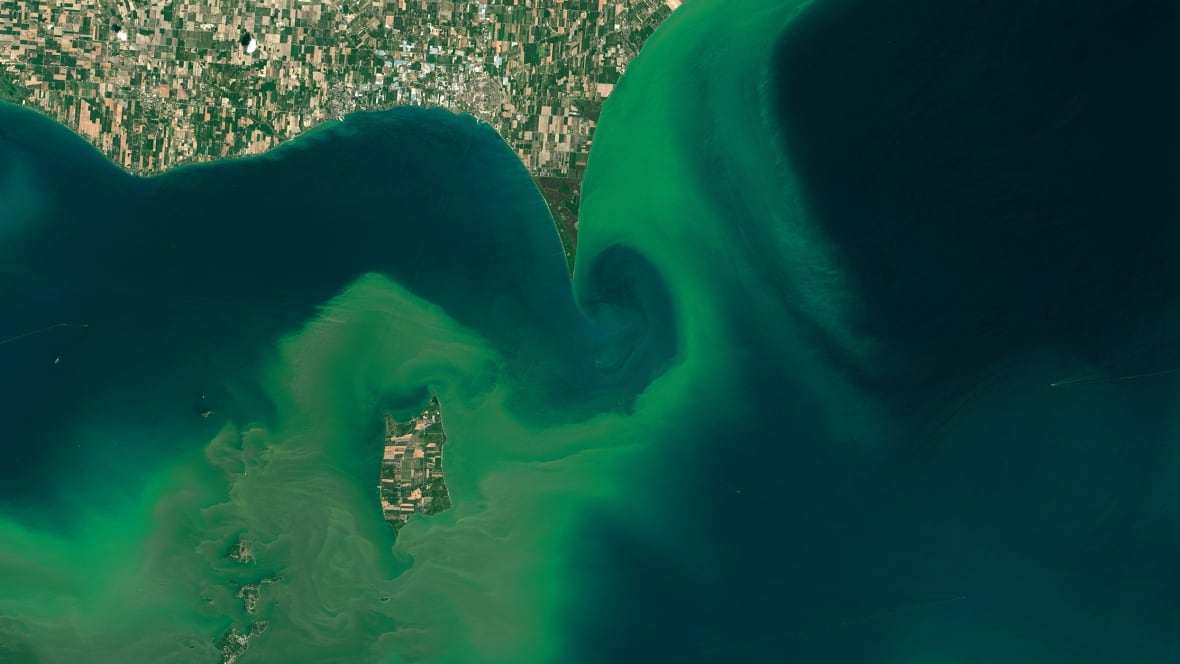World
Algae Blooms Surge in Canada’s Lakes as Climate Change Intensifies

New research indicates that algae growth in Canada’s lakes is on the rise, primarily driven by climate change. A study published in Communications Earth & Environment reveals that algal proliferation has increased significantly in many of the nation’s lakes since the mid-1800s, with a remarkable sevenfold rise in growth rates since the 1960s.
Lead author Hamid Ghanbari, along with a team from McGill University and Université Laval, analyzed sediment cores from 80 lakes across Canada. Their findings suggest that rising temperatures are a major contributing factor to this increase. “This was something very surprising for us,” Ghanbari noted, emphasizing the unexpected spike in algal growth rates.
In addition to climate change, the study highlights the role of excess nitrogen and phosphorus in promoting algal growth. These nutrients often enter waterways through agricultural runoff, stormwater, and wastewater. While algae are an essential part of the aquatic ecosystem, excessive growth can disrupt water quality and harm aquatic life.
Ghanbari pointed out that the study focused on overall algal growth rather than specific harmful blooms. He expressed concern about the potential implications if algal growth exceeds normal levels. “That’s where the problem starts,” he stated, acknowledging the uncertainty surrounding the thresholds for healthy algal populations. Increased chlorophyll levels in lakes could lead to significant environmental issues, including reduced oxygen levels and the release of toxins, as seen in regions like Lake Erie.
A recent analysis revealed the presence of blue-green algae toxins in Lake Erie earlier than in previous years, raising alarms about drinking water safety. Daryl McGoldrick, head of water quality monitoring for Environment and Climate Change Canada, affirmed that while rising algal growth does not guarantee more toxic blooms, it poses risks to marine ecosystems.
The need for comprehensive strategies to address algae proliferation is underscored by Maëlle Tripon, a project manager with the Quebec freshwater advocacy group Fondation Rivières. She noted that warmer temperatures correlate with increased algae presence in lakes. Tripon emphasized that efforts to combat algal growth cannot be limited to local initiatives. “We already knew we need to change locally — like farming practices and also, for example, we need less paved and waterproof surface in the cities,” she explained.
Ghanbari echoed this sentiment, urging for both local and global actions to mitigate climate change. He suggested that individual choices can also contribute to reducing algal growth. “Simple acts such as reducing the fertilizers or properly disposing of household chemicals could really help the lakes,” he stated.
This study not only highlights the alarming trend of increasing algal growth in Canada’s lakes but also underscores the urgent need for both local and global efforts to address the underlying causes of climate change. With the health of aquatic ecosystems at stake, collaborative action is essential to safeguard water quality and protect biodiversity.
-

 Politics4 weeks ago
Politics4 weeks agoSecwepemc First Nation Seeks Aboriginal Title Over Kamloops Area
-

 World5 months ago
World5 months agoScientists Unearth Ancient Antarctic Ice to Unlock Climate Secrets
-

 Entertainment5 months ago
Entertainment5 months agoTrump and McCormick to Announce $70 Billion Energy Investments
-

 Science5 months ago
Science5 months agoFour Astronauts Return to Earth After International Space Station Mission
-

 Lifestyle5 months ago
Lifestyle5 months agoTransLink Launches Food Truck Program to Boost Revenue in Vancouver
-

 Technology3 months ago
Technology3 months agoApple Notes Enhances Functionality with Markdown Support in macOS 26
-

 Lifestyle3 months ago
Lifestyle3 months agoManitoba’s Burger Champion Shines Again Amid Dining Innovations
-

 Top Stories2 months ago
Top Stories2 months agoUrgent Update: Fatal Crash on Highway 99 Claims Life of Pitt Meadows Man
-

 Politics4 months ago
Politics4 months agoUkrainian Tennis Star Elina Svitolina Faces Death Threats Online
-

 Sports5 months ago
Sports5 months agoSearch Underway for Missing Hunter Amid Hokkaido Bear Emergency
-

 Politics5 months ago
Politics5 months agoCarney Engages First Nations Leaders at Development Law Summit
-

 Technology5 months ago
Technology5 months agoFrosthaven Launches Early Access on July 31, 2025



















